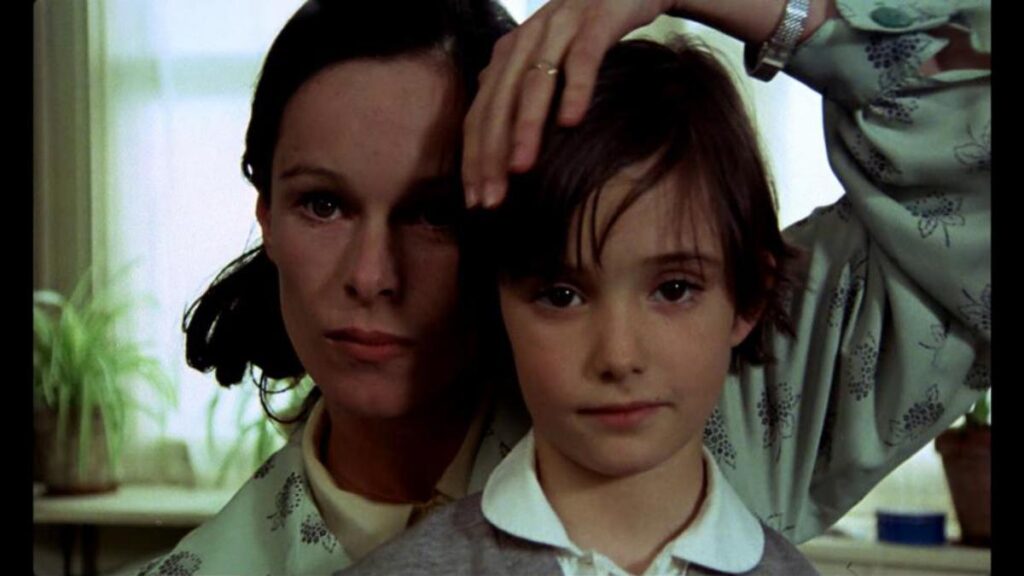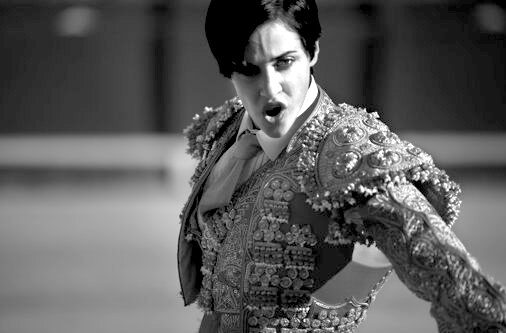Last week we discussed various correspondences between the concepts of Transition (la transición) and disenchantment (desengaño), and how they related to the (apparent) end of Spanish exceptionalism and the emergence of a new kind of violence in 20th-century Spain.

In an effort to learn about the roles these concepts played in the unfolding of fascism and historical memory we read the essay by Cristina Moreiras where she reframes la movida madrileña, la transición, the period of desengaño that sent Spain down memory lane back to the Baroque period in the 17th century, and the emergence of new kinds of violence. We defined terms of historicity, termprariness, and temporality to better understand the complex state of exception claimed by Franco with his fascist regime, and what happened to it upon his death.
On Thursday Chase presented an essay by Willis that discusses how violence, style, politics, and the influence of the Italian aesthetic of giallo impacted Spanish cinema and society.
Choose two of these critical terms (state of exceptionalism, violence, historicity, temporality, transición, desengaño) and compose a reflection on how they are woven in the 1976 film narrative by Saura Cría cuervos (Raise Ravens).
This blogpost has no deadline. Make sure you do not let pending blogposts accumulate until the day before they are due.

Raise Ravens depicts the lives of three sisters dealing with the aftermath of the death of their father (and earlier their mother). The primary theme that seems to show up is that of temporality and how the displacement of time affects all girls, and especially Ana. In the film, Ana sees her mother on many occasions as a sort of ghost stuck in time, living in the memory of the young girl. Ana seems to be living in two times — the present and the time of her mother’s life — not just in flashback, but in a way that affects her current self. Her mother interacting with her in the present makes Ana act in ways that are harsh and erratic. She says she wants to die (in a way mirroring the way her mother says that she does not want to die in an earlier scene) and tells her aunt that she wishes the aunt was dead as well. These seem to be direct effects of the temporality of the mother.
This brings the movie into the second theme which it explores, which is one of violence. While Ana does not participate in any formal acts of violence, she threatens and attempts violence at multiple aspects of the story. She mixes what she thinks is poison into the drinks of her father and her aunt, meaning she wishes to kill them. While the poison is later revealed to be baking soda, there is still the intention of murder on behalf of Ana. Similarly, Ana holds a loaded gun against her aunt and her aunt’s lover, though not shooting them, the possibility of the gun firing surrounds the scene and indicates the underlying tones of possible violence.
Both of these themes intertwine with the period of Transition in Spain as the temporality of both the present and the time of the Second Republic seemed to be prevalent in the minds of Spanish citizens. This time of change could go two ways, either a new way or the way it did back in 1939. The threat of violence from Francoist institutions, though less was done after Franco died, still loomed large and did not allow many people to rest in the comfort of post-Francoism.
Two weeks ago, we watched Cria Cuervos, an eerie and subtly violent film that highlights the lives of three young girls after their parents die, and their aunt comes tolive them, as their new caretaker. The two terms that we discussed that really resonated with me when watching this film are violence and desengaño (disenchantment). As the transition period in Spain disillusioned and unsettled Spaniards, this film astutely mirrors this lack of structure and confusion through Ana’s hazy understanding of death and what it means to lose someone close to you. The violent elements in the film can especially be seen in her desire to interact with dead people and creatures and claims she wants to die herself, on numerous occasions. Ana even tries to aid her grandmother’s death (although at first it seems like she believes Ana is only playing around and doesnt understand her request to die).
Ana’s unsentimentality and indiffernce about anything where one is expected to show emotions is a reflection on how the country has become so numb to inner conflict and violence. This goes hand in hand with the idea of desengaño, and the fact that Spaniards had such a false vision of what Spain would begin to look like after the transition period and rule by a new leader post-Franco. Although we expect to see immediate changes in communities, it becomes apparent very quickly that it will take much more than just the death of a dictator to ameliorate the damae that Franco has imparted on the nation. Cria Cuervos almost exemplifies this, in my opinion, by bringing the girls’ aunt into the picture. After the only reality they knew (of having at least one loving parent), the aunt disrupts the freedom these children seemed to have had with their mother who was so carefree and loving.
While watching Raising Ravens, an eerie film about a trio of sisters, I felt as though I was constantly anticipating something dramatic and shocking to happen, as violence was threatened but never really occurred. The girls are being raised by their aunt after both of their parents die, and we are left questioning if the youngest was behind her father’s death. We see her witness her mother’s illness, we see her somehow involved in her father’s death, and we see her threaten her aunt and offer to help her grandmother die. While a sudden act of violence is never realized, suffering is everywhere. This is emblematic of Spain after Franco’s death, with uncertainty and fear lingering.
Transition is another theme of this time explored by Raising Ravens. The girls’ aunt, a harsh yet responsible guardian, can be seen as a transitory figure in their lives, and their actual state of childhood presents a transitional period. Many of the realities of their lives are influenced by this state where they are experiencing adult problems, yet they have little freedom. This is similarly emblematic of the post-Franco period during which Spain experienced a national “childhood”. This film was haunting and full of tension, and left me with a strong impression regarding this period of Spain’s history.
Raise Ravens was an interesting film. Here we see a young Ana attempt to poison her father and later in life Paulina with baking soda. The first kill is an effort to avenge her mother for the horrible way her father treated her and this incorporation of attempted assassination by such a young child is an interesting aspect of a film because it combines innocence with the destruction of innocence.
Temporality plays a massive role in this film for all three daughters., mainly, however, Ana. Ana is stuck in the past and because of the death she experienced so early on in life, is unconcerned with dying. She tries to poison two people and offers to help kill her grandmother. This comfortability with death is likely caused by the slow death of her mother when she was young. Her mother, despite being dead, continues to appear in Ana’s life as Ana sees her as a. ghost through most of this film. This can been seen as Ana being stuck in the past and not moving on from her mother’s death. The idea of death that Ana is so comfortable with also leads us to believe that Ana is stuck in the past. She tries to kill her father for his mistreatment of her mother and she doesn’t move on from this.
Another present theme in this film is slightly passive violence. As Ana is so unconcerned with death, she attempts to poison two people. While this act is not aggressive as it requires no physical force such as fighting, it is violent because she is attempting to hurt and kill these people. This violence is surely brought on by her vision’s of her mother. The present role her mother plays in her life often confuses her and even causes her stress. It is likely the reason she is so comfortable with the violence she takes out on her father and aunt. Ultimately Ana’s obsession with the temporality she has with her mother influences her to commit violent acts against her family members.